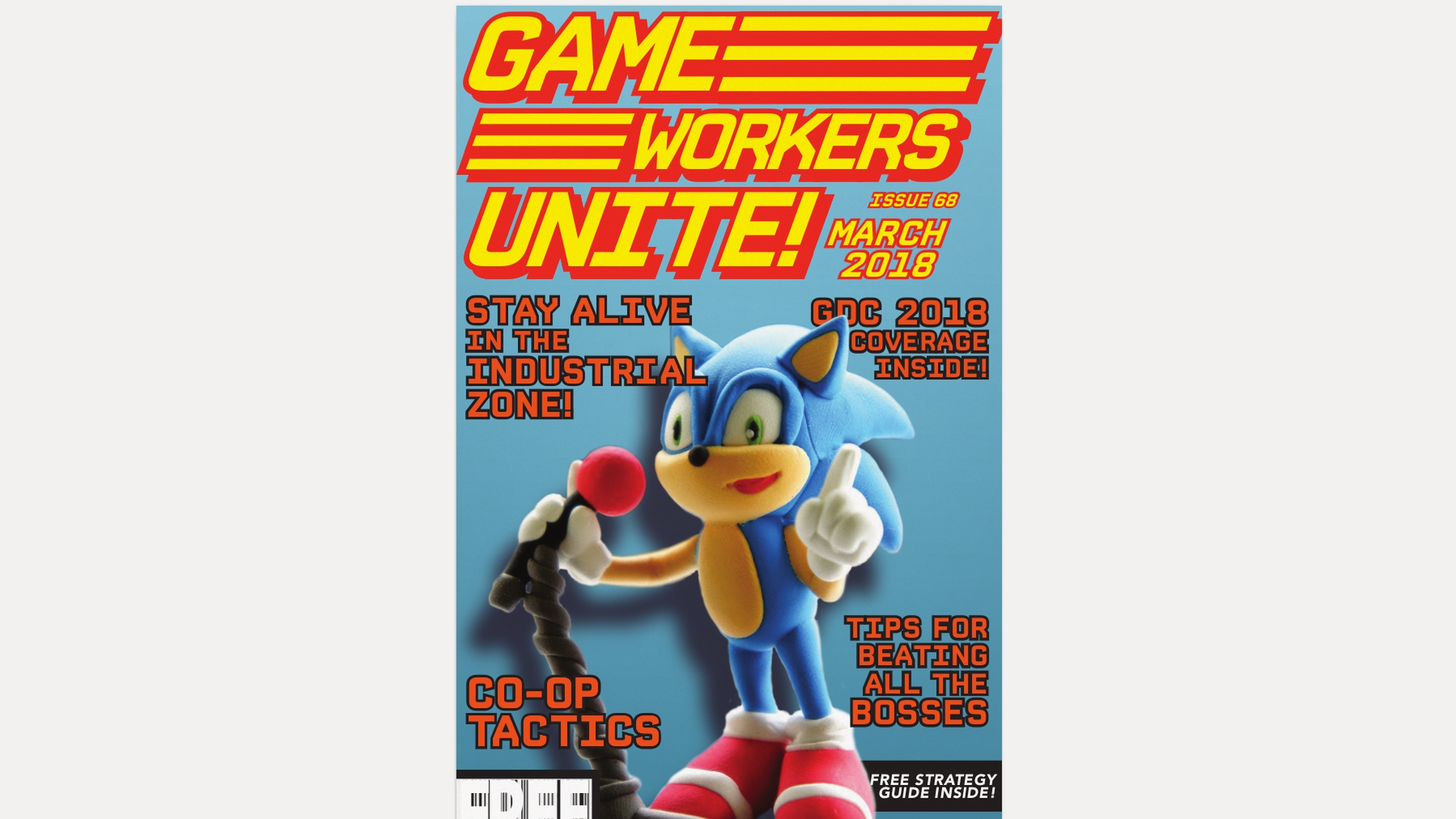Players as Workers: Who Will Profit?
by
Patrick Prax (@praxp)
March 30, 2018
Featured in Technology and The Worker (#2)
Players make the games they play. It’s time that they finally get the credit
theory
Players as Workers: Who Will Profit?
by
Patrick Prax
/
March 30, 2018
in
Technology and The Worker
(#2)
Players make the games they play. It’s time that they finally get the credit
Our games are sold to us by international production companies, many of which are infamous for both their business practices and customer relations. However, who is actually making those games?
Today, digital games are one of the central conflict areas around authorship, ownership, and control of digital creativity. The dominant view of games and game production here is that they are made by huge games studios and publishing houses who (need to) maintain tight control over how their games are played by their consumers—the players. The increase of independent creation of games not primarily as cultural commodities, but as participatory and shared cultural expressions or political and persuasive games, is seen as a new development. While some areas of independent game development are in the process of being subsumed into capitalist production by means such as incubators and monetization1, alternative game design and player creation is alive and well. There is a growing number of game design collectives, modders, and player creators that are part of the ecosystem of digital cultural production and that are not creating culture for profit, but for people. This raises two questions:
- How big is the influence of player creators on gaming as it presents itself today? Is this really a subversion?
- What is the history of player created digital games? Is the established triple-A industry the “natural” way of game creation?
Then, from the perspective of political activism, there is a third question:
- How can we as workers, players, and player creators remove these limitations, have player creators recognized for their contributions to digital and gaming culture and maximize the possibilities of games to be alternative media that allow us to envision a different, more just society?
In my research, I have focused on virtual worlds and Massively Multi-Player Games (MMOs), not only because they are a central part of contemporary gaming culture, but also because they promise the possibility of re-creating sociability and a way of imagining an alternative society or production model. This attribute, being a shared space for social interaction, is a commonality between MMOs and other kinds of social media like social networks. World of Warcraft (WoW), for instance, has not been created in a vacuum of Blizzard, but instead has profited from a history of game and virtual world development and design that is heavily reliant on player creativity. WoW as an MMORPG is closely related to previous games of the same genre like EverQuest (Sony Online Entertainment, 1999) and Ultima Online (Origin Systems, 1997). These titles, in turn, owe considerable parts of their design to text-based MUDs.
MUDs—Multi-User Dungeons (Trubshaw and Bartle, 1978)—are text-based virtual environments that themselves developed from text-based single-player adventure games. In these games, the world is presented as a text and the player interacts with the game and other players in it by typing in text themselves. This means that—at least for this area of MMO games—the history of player-created digital games shows their origin to be firmly rooted in participatory and alternative creation, by players and for players outside of a market. This also means that from a historical perspective, the established triple-A industry that currently dominates the production of digital games and is seen as the “natural” producer of digital culture in this manner is instead a fairly recent addition to the alive-and-well participatory game design ecosystem from which it has sprung.
So what’s the situation with other genres of games?
Arguably, these products are still only possible because of the labour of player creators who built the entire genre over decades of free work. Through practices like distribution of application-programming interfaces (“APIs”), modding (the modification of existing games), add-ons, interface modifications, theory-crafting, the creation of collective learning tools, and other forms of player creation they radically modify the design of games, sometimes even against the will and vision of the producers. This model of co-creative game design can be useful for future discussions of ownership and cultural production as well as exploitation. (Prax, 2015:15)
For example, Counter-Strike (1999), a mod for Half Life (Valve, 1998), was subsequently taken over by Valve and is still one of the most prominent games of its kind. Another example of player-created content becoming an entire genre of games (Multiplayer online battle arena) is DotA (Eul, Steve Feak, IceFrog, 2003), a map used for Warcraft 3: Reign of Chaos (Blizzard, 2002). Games that adapt the central design of DotA (as well as some of the designers) are DotA 2 (Valve, 2013), Heroes of Newerth (S2 Games, 2010), Heroes of the Storm (Blizzard, 2015), and, most prominently, League of Legends (Riot Games, 2009) which at the start of 2014 had 27 million daily, and 67 million monthly, players (Riot Games, 2014) and since then has grown to over 100 million individual monthly players.
This means that some of the most central games of today’s gaming culture share the same historic roots in player creation and participatory design. Players do have considerable influence on the narrative of games, but they are not necessarily able to subvert the design of existing games to create a non-hegemonic message. After all, the industrial production of games as cultural commodities limits the potential of co-creative game design for subversion by reducing the level of participation in the creation process, and by keeping player creators relatively disempowered. Although there exists a mutually dependant relationship between the AAA studios and the co-creators (players), the companies often do not recognise the free value added to their game and will keep the tools necessary for expansion of this limited. Arguably, Blizzard’s creation would be even more popular if the necessary interface for co-creation would be implemented, but the fear of conflict still keeps the World Of Warcraft’s universe under a fairly tight control.
This leads us to question three: How can we as workers, player, and player creators remove these limitations, have player creators recognized for their contributions to digital and gaming culture and maximize the possibilities of games to be alternative media that allow us to envision a different, more just society?
One possibility here could be that player creators organize and fight for more rights, a better treatment, and the recognition of their contributions and authorship. While this is certainly a possibility, there are currently no signs of it. Player creators often also accept the exploitation of their labour and donate it for free to international corporations who publish the games they love and play. This does limit who can become a cultural co-creator as one has to be able to afford being exploited like this. Only fairly well-paid workers, then, have access to this sort of co-creation, which excludes those of us who might have the most potential or relevant experience for changing games.
There is also no sign that the industry is developing guidelines for treating player creators fairly. This is not surprising, since there isn’t enough pressure from below; it is against the nature of capitalist business to reduce exploitation intensity if there is any other choice. Here, there is also a reminder that political progress and worker rights are not freely handed over by the capitalist class, but are instead the result of worker struggle or political regulation. There are people in these organizations who do not work for profit maximization and who are even friends with player creators, but these informal relationships do not lead to systematic change.
Another model for player participation in the creation of a game is to make it possible for player creators to create game elements for other players. These creations are typically virtual items like weapons or armor in DotA or new buildings in a city-building game like Cities: Skylines (Colossal Order, 2015). Player creators who work this way can either sell their items in a store that is typically integrated into one of the dominant platforms (like Steam), or ask for donations from the players who are using their work using a system like Patreon. While this is a step in the direction of players as producers of culture, there are still limitations here. The platforms in charge of the sales of items can, and do, control player creators’ access to their market, which means that they are in a position of power when it comes to player creators.
Steam, for instance, is in sole control over the percentage of the sales income that is given to player creators, who are not in the position to collectively mobilize against the powerful games distribution platform. Those who are reliant on patron funding aren’t in a much better position; after all, the notion of patronage connotes wealthy individuals (say, senators of ancient Rome) funding artists they like and not the broad re-imagining of the social order in the interest of the proletariat. Player creators who make a living based on Patreon are also working in precarious conditions, on the one hand because they have no employment benefits (not to mention guaranteed income), and partly because the company running the game could remove their content at any time (which is the most likely reason for them then losing their patrons).
This leaves the players. Educated players, who understand the involvement of player creators and see games as participatory and co-authored, could push for change. So far, player influence is largely leveraged by the player creators as an extension of the players’ customer power. The add-ons they make are popular with large numbers of players who would potentially stop playing the game, which would lead to financial consequences to the game production company.
On the other hand, even this influence is not sufficient because most players subscribe to a commodified and even service logic for games. They are not used to acting collectively, even when the property rights to their purchased games are taken away. They need to be educated. Something that could lead to such education would be rising issues in relation to new kinds of co-created content that are becoming more central to today’s culture: streaming and esports. These are both co-creative in a similar manner as game design, but here the player creators, the streamers and esports stars, are so much more visible and vocal than the niche group of modders and player creators. The struggle about who owns streaming or esports content is going on right now. The interests of the streamers, player creators, esports athletes and esports audiences are all aligned with the rights of co-creators of this culture.
We should be ambitious and envision a public service platform that enables streamers, players, player creators, and citizens to live in their digital culture in a free space for cultural creation (in gaming), a free space to make, modify, share and fund games. This could be the gaming equivalent of taking back the free content we have given to platforms like Facebook and Twitter; rarely do social media users receive credit for completing their platforms. However, where gaming differs is that the players’ contributions are rewarded for their substance rather than for the advertisements they attract. So far, attempts for not-for-profit social networks have not been successful, but this clearly has to be the final aim for digital civil rights activism, as well as collectivisation of the games’ ownership. We as people, as users, and as players must redefine our relationship with online content.
We could start by imagining alternatives. What would digital co-operatives look like? What could be the incentives to counteract the consumerist relationship between a game studio and a player?
The reader can start addressing this discourse — for instance, by reading and sharing this.
-
(and, ultimately, by university programmes, such as the one I am a part of, that are aiming to create entrepreneurial game designers) ↩
Featured in Technology and The Worker (#2)
author
Patrick Prax (@praxp)
Subscribe to Notes from Below
Subscribe now to Notes from Below, and get our print issues sent to your front door three times a year. For every subscriber, we’re also able to print a load of free copies to hand out in workplaces, neighbourhoods, prisons and picket lines. Can you subscribe now and support us in spreading Marxist ideas in the workplace?
Read next



